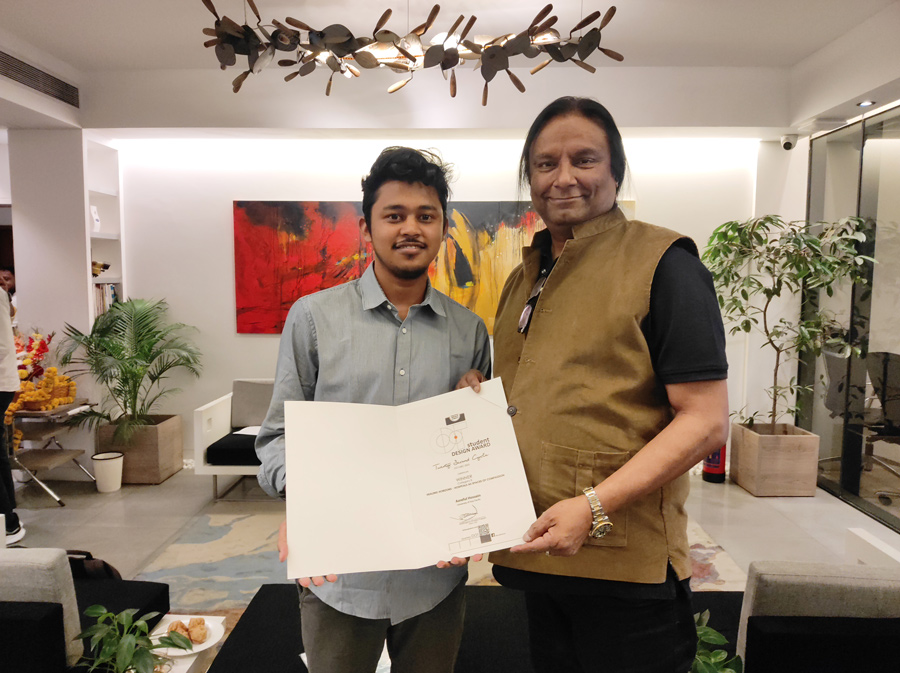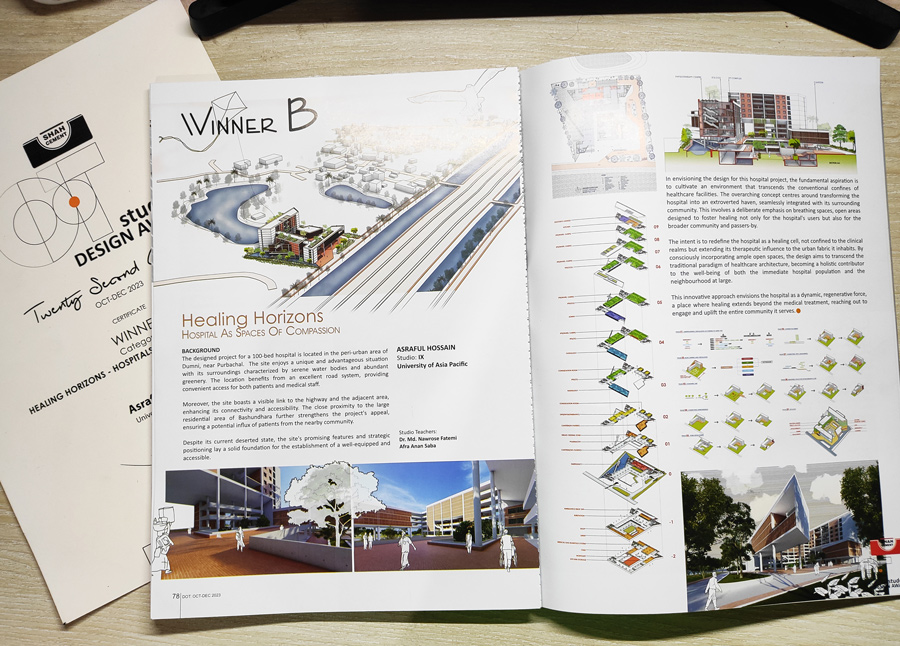Architect student won 22nd cycle of DOT Student Design Award
𝗠𝗿. 𝗔𝘀𝗿𝗮𝗳𝘂𝗹 𝗛𝗼𝘀𝘀𝗮𝗶𝗻, student of the Department of Architecture, University of Asia Pacific - UAP has been announced as the winner in Category B (4th and 5th year projects) of 22nd cycle of DOT Student Design Award, sponsored by Shah Cement.


His project titled "𝗛𝗘𝗔𝗟𝗜𝗡𝗚 𝗛𝗢𝗥𝗜𝗭𝗢𝗡𝗦: 𝗛𝗢𝗦𝗣𝗜𝗣𝗜𝗧𝗔𝗟 𝗔𝗦 𝗦𝗣𝗔𝗖𝗘𝗦 𝗢𝗙 𝗖𝗢𝗠𝗣𝗔𝗦𝗦𝗜𝗢𝗡". The project was conducted in Level 5, Term 1 studio under the able supervision of 𝗗𝗿. 𝗡𝗮𝘄𝗿𝗼𝘀𝗲 𝗙𝗮𝘁𝗲𝗺𝗶, Associate Professor, Dept. of Architecture, UAP and 𝗔𝗳𝗿𝗮 𝗔𝗻𝗮𝗻 𝗦𝗮𝗯𝗮, Lecturer, Dept. of Architecture, UAP.
Mr. Asraf is currently doing his final year thesis project. UAP family is immensely proud of him for his success and wishes him all the best.


𝗣𝗥𝗢𝗝𝗘𝗖𝗧 𝗕𝗥𝗜𝗘𝗙:
The designed project for a (100-bed hospital) is located in the peri-urban area of Dumni, near Purbachal. The site enjoys a unique and advantageous situation with its surroundings characterized by serene water bodies and abundant greenery. The location benefits from an excellent road system, providing convenient access for both patients and medical staff. Moreover, the site boasts a visible link to the highway and the adjacent area, enhancing its connectivity and accessibility. The close proximity to the large country residential area of "Bashundhara" further strengthens the project's appeal, ensuring a potential influx of patients from the nearby community. Despite its current deserted state, the site's promising features and strategic positioning lay a solid foundation for the establishment of a well-equipped and accessible.
In envisioning the design for this hospital project, the fundamental aspiration is to cultivate an environment that transcends the conventional confines of healthcare facilities. The overarching concept centers around transforming the hospital into an extroverted haven, seamlessly integrated with its surrounding community. This involves a deliberate emphasis on breathing spaces, open areas designed to foster healing not only for the hospital's users but also for the broader community and passersby. The intent is to redefine the hospital as a healing cell, not confined to the clinical realms but extending its therapeutic influence to the urban fabric it inhabits. By consciously incorporating ample open spaces, the design aims to transcend the traditional paradigm of healthcare architecture, becoming a holistic contributor to the well-being of both the immediate hospital population and the neighborhood at large.
This innovative approach envisions the hospital as a dynamic, regenerative force, a place where healing extends beyond the medical treatment, reaching out to engage and uplift the entire community it serves.
